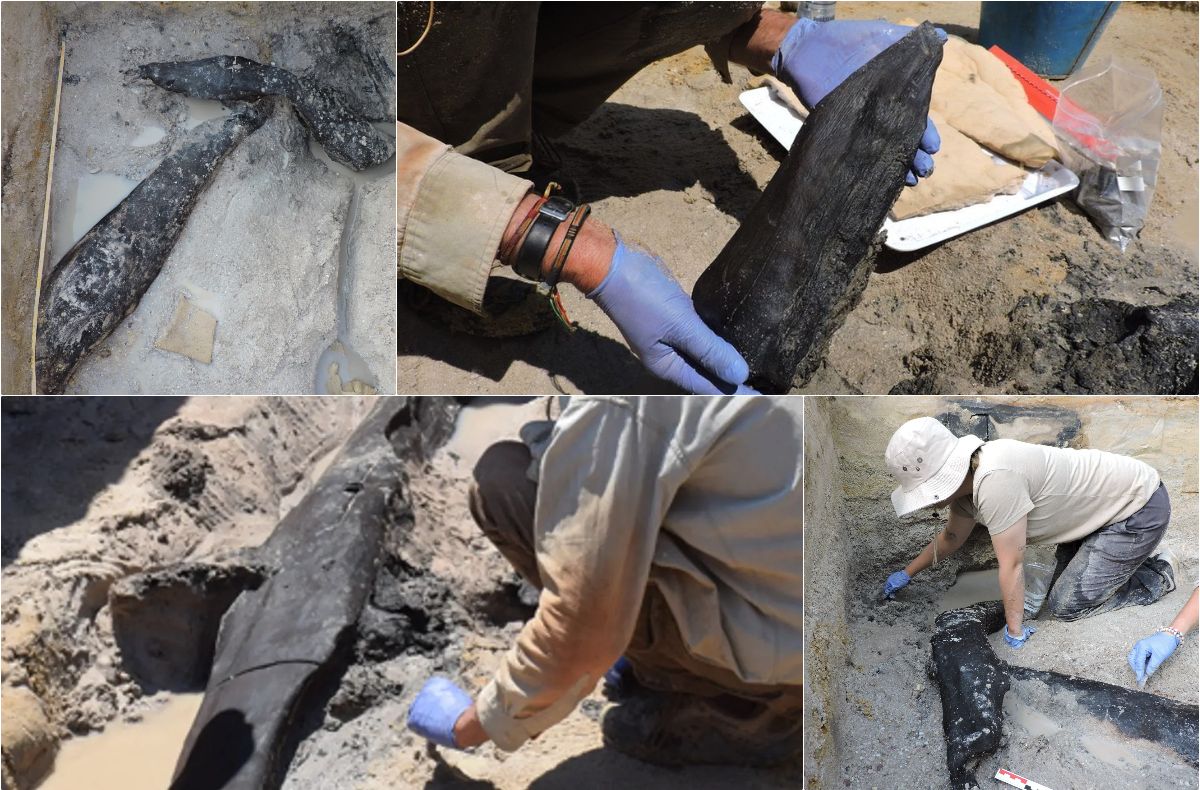Archaeologists have discovered the world’s oldest wooden structure near Zambia’s Kalambo Falls. The structure is made from two interlocking logs of a large-fruited willow tree.
The logs were embedded in clay and preserved by a high water table. The structure dates back to roughly 476,000 years ago. The discovery was made in 2019 when researchers noticed a piece of wood sticking out of a cliff face. The logs were preserved by waterlogged sediments that were starved of oxygen.
The structure may represent the earliest use of wood in construction. It has no known parallels in the African or Eurasian Paleolithic. The discovery is remarkable because wood rarely survives for long periods. The oldest Homo sapiens fossils known to date were found in Morocco and determined to be roughly 300,000 years old.
“That the wood has remained in place and intact for half a million years is extraordinary. And it gives us this real insight, this window into this time period,” said Duller, coauthor of the study on the wooden structure that published in the journal Nature on Wednesday.
“It’s completely changed my view of what people were capable of that time,” he added. Wood artifacts are rarely preserved in the archaeological record, particularly at such an ancient site, because organic material easily rots and disintegrates. At Kalambo, Duller said high water levels and fine sediment encasing the structure helped to preserve the wood.
The discovery challenges the prevailing view that Stone Age humans led a nomadic lifestyle, Duller said. Kalambo Falls would have provided a reliable source of water and the surrounding forest ample food, perhaps allowing for a more settled existence.
“At the very least, they’re putting a huge amount of effort into this place,” he said. The wooden structure has no real parallel in the archaeological record, according to the study.
The earliest known wood artifact is a 780,000-year-old fragment of polished plank found at the site of Gesher Benot Ya’aqov, Israel, while the oldest wooden tools for foraging and hunting on record — unearthed in Europe — date back about 400,000 years. It’s thought that Neanderthals made structures from bones or stalactites around 175,000 years ago.
Duller compared the technique used to connect the structure’s parts to Lincoln Logs, the children’s building toy made of miniature logs that lock together using square notches. He said it was improbable that the two logs drifted and linked together naturally.
“Colleagues have made modern replicas of the stone tools that we see and worked woods of similar density, and we can see that the shaping of these marks is identical,” Duller said. “So that’s what makes us really confident (that) this is not a natural process — it has been done intentionally using stone tools.”
The wood pieces were too old to be directly dated using radiocarbon techniques. Instead, the team used a technique called luminescence dating, which involved measuring the natural radioactivity in minerals in the fine sediment that encased the wood to figure out when it was last exposed to sunlight.
This dating method put the structure at 476,000 years old and determined that the four wooden tools — a wedge, digging stick, cut log and notched branch — go back 324,000 years.
Researchers aren’t certain which species of ancient human made the structure and wooden tools, but it is highly unlikely to have been our own. The earliest known Homo sapiens fossils date from around 300,000 years ago and were found in what’s now Israel, Duller said.
He said the complexity of the structure suggests the people who made it were cognitively sophisticated and were able to make and execute a complex plan — something that likely required the use of language.
Archaeologist Dr. Annemieke Milks, a postdoctoral research fellow at the University of Reading in the UK, wrote in a commentary published alongside the research that the discovery revealed when people started to structurally alter the planet for their own benefit.
The paper also showed that a material widely used in the present day played, as long suspected, an important role in the Stone Age. “Studies such as this one highlight the role of this most humble of materials in the human story,” said Milks, who wasn’t involved in the research.

